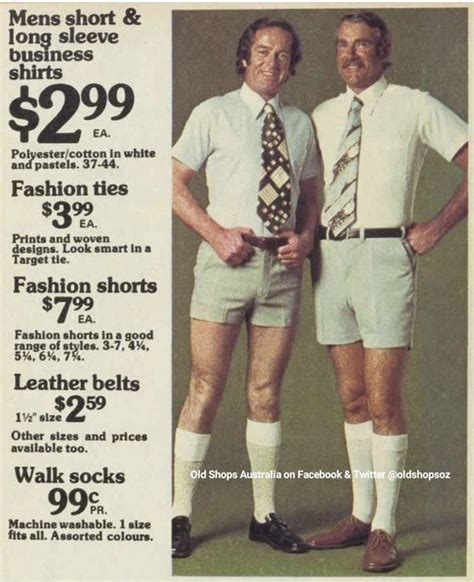I borrowed a borescope off a mate in the weekend and have been inspecting all my rifle barrels.
This morning I happened to pick up my 25-06 and was surprised to see the first 30cm of the barrel looking fcuked.
Long heat cracks, rough as hell, and bugger all rifling left in the first 3cm!
This rifle has shot under 1000 rounds (about 870), and I'll be the first to admit that I've been running quite hot loads... 85g Nosler Ballistic Tips at 3600fps, 100g NBT at 3400fps and 120g Speers at 3170fps.
I'm on average running 59-60gr of Vitovori N160 which is a lot of powder for a .257" bore (hence 25-06 is known as an overbore cartridge). The cases are only lasting me 4 reloads before I have to throw them....and require trimming after each firing....so I know they are at high pressure (but not flattening out primers).
Therefore my question is this:
Is it the amount of powder burnt that causes barrels to wear out or is it the pressure/'hotness'?
Welcome guest, is this your first visit? Create Account now to join.
Welcome to the NZ Hunting and Shooting Forums.
Search Forums
User Tag List
+ Reply to Thread
Results 1 to 15 of 44
Hybrid View
-
11-03-2021, 11:14 AM #1
Is it Pressure or Powder Capacity?
A good job and a good wife has been the ruin of many a good hunter.
-
11-03-2021, 11:59 AM #2
Barrel erosion happens when gases bypass the bullet, this is a high-pressure high-temperature erosive FLOW. It's not enought there are hot gases present to erode the barrel that much. For example, shooting erosive Cordite .303 Mk VII ammo you can sometimes find that little wad thingy behind the bullet (see my avatar picture) as good as intact downrange.
I don't buy it that gases are significantly cooler 3-4 cm into the barrel, it's more that the bullet by then has found and married the lands and grooves and bypass of gases is less.An itch ... is ... a desire to scratch
-
11-03-2021, 12:15 PM #3
Your post is difficult to understand, but I think you are saying that it is the pressure and temperature that causes barrel erosion not the amount of powder capacity of the cartridge.
I also have never heard the idea that erosion is caused when hot gases 'bypass' the bullet. I would have thought the greatest amount of gasses would be behind the bullet and hence be the main cause of erosion not the gasses in front of the bullet?A good job and a good wife has been the ruin of many a good hunter.
-
11-03-2021, 01:18 PM #4
No it's not the momentary pressure nor the momentary heat, but the combination of these with FLOW. An imperfect seal causing gas leakage around a bullet damages both bullet and barrel.
- Gas behind gas sealing bullet flows at the speed of the bullet,
- Gas bypassing a bullet does so at massively high temp/pressure/velocity which maximises erosion.
- Gas once past and ahead of a bullet and moving towards the muzzle is a lower pressure/temp/velocity and negligible for barrel erosion.
Think of a giant holding a tungsten carbide file, and pressing it against a steel bar held in a vice. He presses it against the steel bar with a pressure of 40,000 pounds per square inch. The steel bar is getting slightly indented but no steel will be lost from the bar until he pushes the file forwards.
Likewise a momentary very hot gas at high pressure does little to erode the barrel unless it also FLOWS.
My illustration showing this difference is how my bullet wads are intact and unburnt after traveling down a barrel wedged between a known hot and erosive propellant and bullet. The gases do not move past the wads (which would destroy them near-instantly) but merely press against them.
An unobturated bullet will allow gas to bypass it at a massively high velocity (which will happen even more so in a wide throat). But when a bullet seals the rifling the gas can move no faster past the rifling than the speed of the bullet ahead of it.
From: https://chuckhawks.com/rifle_barrel.htm
"Barrel wear is due to erosion from the extreme heat and pressure caused by firing a cartridge. Erosion starts in the barrel's throat, where the rifling begins, as this is where the heat from the burning powder is greatest; it literally melts away the steel a tiny bit with every shot. Erosion gradually moves down the bore with use and can be seen with the naked eye as it becomes more severe. Heat is bad for barrels, so letting a barrel cool between shots extends barrel life.
As erosion occurs more powder gas blows past the bullet before it can seal the bore. This increases the rate of erosion and also lowers muzzle velocity. Falling velocity, compared to a new barrel, is a sign that a barrel is wearing out."An itch ... is ... a desire to scratch
-
11-03-2021, 12:27 PM #5
-
11-03-2021, 12:09 PM #6
In an article I read in a speer annual from the 60s, that discussed this gas temperature from the propellant peaks in the 3006 at around 3100 degrees kelvin, and the steel skin of the bore in the region of the leade at 1600 kelvin which is uncomfortably close to the melting point of steel. So you are semi liquifying the surface and the weight and velocity of the hot gasses erode this metal quite readily. the answer is I guess the amount that of powder the temperature it generates and the volume of gas that has to get out determines how erosive the propulsion is.
All single base powders gram for gram generate the same amount of heat, double base powders generate about 20% more w/w due to the nitroglycerin component, some pics to illustrate this from the manual that I have.
It's dated 1966 but I'm pretty certain that the infomation is still valid, after all it was worked out by guys with pocket pen protectors, short haircuts and glasses who could do complex equations in their heads or on a sliderule.Last edited by Marty Henry; 11-03-2021 at 12:24 PM.
-
11-03-2021, 12:24 PM #7
This sounds 'correct' as I would suspect it would be the amount, the temperature and the volume. But no mention of pressure?
That raises the question....
- if I was to put a slower single base burning powder than N160 (ie Reloader 26 at the same 60 grain amount) in my 25-06, you say it would be at the same heat, and it would probably be at the same volume....but it would definitely be at a lower pressure as a slower powder.
Would the same amount of barrel erosion occur at lower pressure?
Edit: ok the photos have just attached....I see I have some reading to do...thanks for that info
Last edited by Hermitage; 11-03-2021 at 12:29 PM.
A good job and a good wife has been the ruin of many a good hunter.
-
12-03-2021, 10:40 AM #8Member

- Join Date
- Feb 2013
- Location
- Wanganui without an "h"
- Posts
- 3,023
-
12-03-2021, 10:54 AM #9Member

- Join Date
- Dec 2019
- Location
- Okawa Hawkes Bay
- Posts
- 3,177
-
12-03-2021, 11:45 AM #10Member

- Join Date
- Feb 2013
- Location
- Wanganui without an "h"
- Posts
- 3,023
-
11-03-2021, 12:32 PM #11
I don't know for sure but I suspect that a slower powder which delivers the same amount of energy over a slightly longer interval and we are talking milliseconds here might actually prolong the peak temperature. Fact is barrels erode, high velocity coupled with large wodges of powder will make it happen faster.
-
11-03-2021, 01:03 PM #12
I read the Speer reloading pages you attached @Marty Henry.
They put it down to the gas core temperature under pressure in relation to the inner surface steel temperature that causes the erosion.
That is why the throat erodes the worst as that is where the gas core temperature is the highest. As the bullet passes along the barrel the pressure and temperature decrease as the space behind the bullet grows to fit the expanding gases.
So it seems it is due to gas temperature and pressure NOT cartridge powder capacity (ie if there is a lot of powder but the gas temperature and pressure, once it ignites, is not that high, then there is less barrel erosion).
An interesting aspect is that they state that all the powder is burned and transformed into hot gasses at around 9" of barrel length (they do not say what cartridge they base that on). This means everyone who says you need at least 16" to 'burn all the powder" is incorrect and that the 'muzzle flash' must be the gasses not burning powder.A good job and a good wife has been the ruin of many a good hunter.
-
11-03-2021, 01:16 PM #13
Yep, I re-read those Speer manual pages and it is obvious that it is not the amount of powder burning/burnt that causes the 2200 K heat that destroys barrels... it's the pressure.
The pressure causes the extreme heat that's necessary to erode and heat crack the barrel. Kinda like how they make carbon turn to diamonds = Pressure.A good job and a good wife has been the ruin of many a good hunter.
-
11-03-2021, 01:23 PM #14
I wonder how much throat erosion is due to still unburnt powder being forced into the throat by the pressure building behind it.?
"Hunting and fishing" fucking over licenced firearms owners since ages ago.
308Win One chambering to rule them all.
-
11-03-2021, 02:01 PM #15Member

- Join Date
- Dec 2019
- Location
- Okawa Hawkes Bay
- Posts
- 3,177
Greetings All,
An interesting thread. In overall summary, with all other variations being equal, could we say?
More powder then more erosion.
Smaller bore then more erosion.
Perhaps also?
Higher pressure then more erosion.
And as some have suggested that shorter neck then more erosion.
I suppose that nothing comes without a cost. The .244 H&H (on the.300 H&H case) was reputed to fry barrels with a very few hundred rounds.
Regards Grandpamac.
Similar Threads
-
6.5 cm case capacity
By WildBrad in forum Reloading and BallisticsReplies: 6Last Post: 09-02-2021, 12:25 AM -
6.5 cm case capacity
By WildBrad in forum Reloading and BallisticsReplies: 5Last Post: 06-02-2021, 05:22 PM -
MTM Ammo Can Capacity
By The Jackel in forum Firearms, Optics and AccessoriesReplies: 18Last Post: 14-08-2013, 07:59 PM -
Modding T3 mag for more capacity
By Spanners in forum Firearms, Optics and AccessoriesReplies: 6Last Post: 29-12-2012, 05:26 PM
Tags for this Thread
Welcome to NZ Hunting and Shooting Forums! We see you're new here, or arn't logged in. Create an account, and Login for full access including our FREE BUY and SELL section Register NOW!!





 35Likes
35Likes LinkBack URL
LinkBack URL About LinkBacks
About LinkBacks



 Reply With Quote
Reply With Quote




Bookmarks